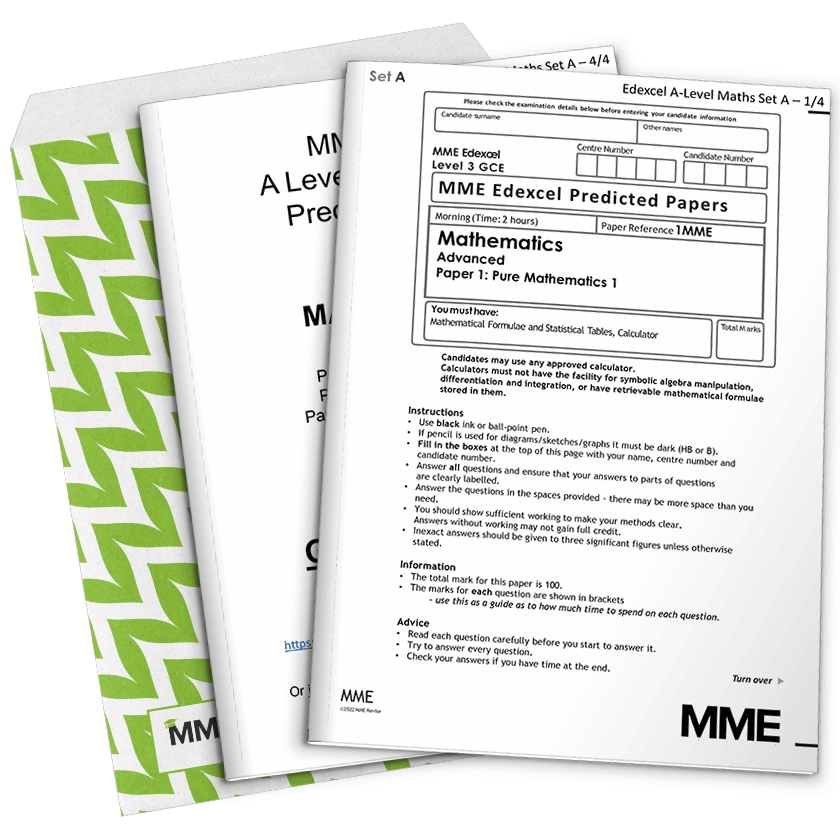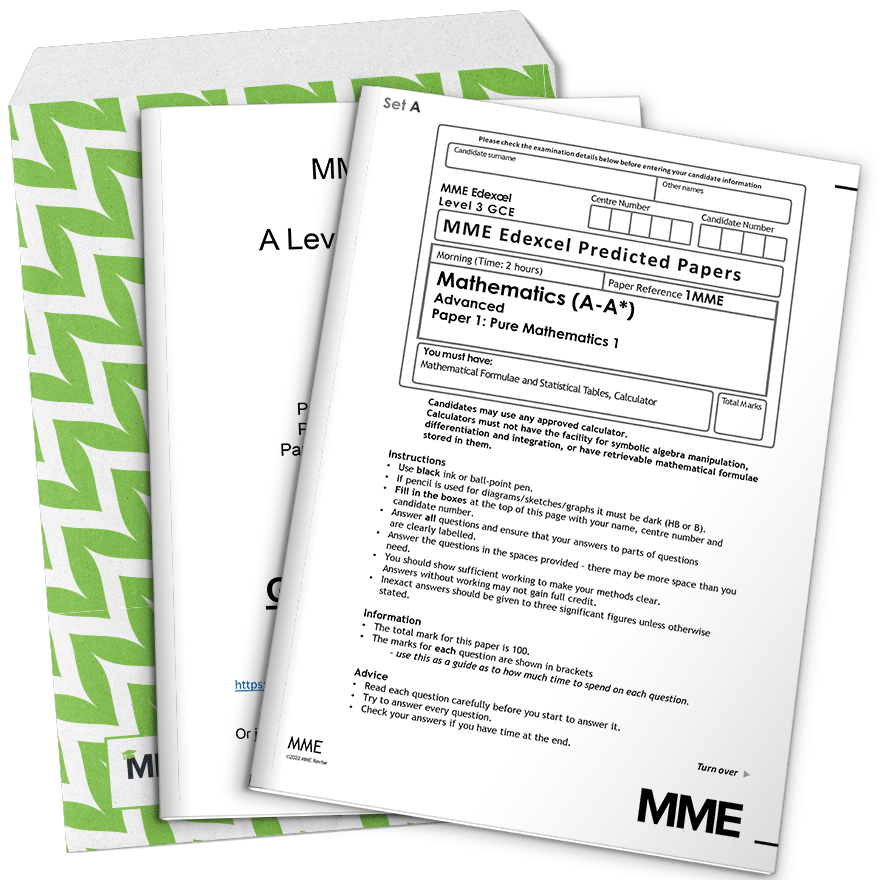Integration
Integration Revision
Integration
Integration is the inverse of differentiation. It is represented by the symbol \int. Indefinite integrals, which we will look at on this page, have multiple answers because of the constant of integration. Definite integrals have limits and do not have a constant of integration – they are used to find the area under a graph.
The following topics build on the content in this page.
Integration is the Inverse of Differentiation
Integration is the inverse of differentiation. This is the Fundamental Theorem of Calculus.
Example: We know that the derivative of x^{2} is 2x. This means that the integral of 2x is x^{2}, which we write as \int2xdx=x^{2}. Do not forget the dx, it will be important in later sections.
However, this definition of integration causes a problem.
Example: Differentiate
i) x^{3}
ii) x^{3}+3
iii) x^{3}-19
You will notice that all of these are 3x^{2}. So what is \int3x^{2}dx? Is it x^{3}, x^{3}+3 or x^{3}-19? Under the rule established above it is all three.
This is where the constant of integration comes in.
In fact, we write \int3x^{2}dx=x^{3}+c, where c represents any constant, because all constants differentiate to 0. We do this for all indefinite integrals.
Integrating a Polynomial
To integrate something of the form x^{n}, add \mathbb{1} to the power then divide by the new power, to get \dfrac{1}{n+1}x^{n+1}
\int x^{n}dx=\dfrac{1}{n+1}x^{n+1}+c
As with differentiation, we can integrate term by term, and the integral of n times a function is n times the integral of a function.
This means that we can now integrate polynomials.
Example: Integrate x^{2}+3x+4
\int x^{2}+3x+4dx=\int x^{2}dx+3\int xdx+4\int1dxDo the integration term by term.
For x^{2}, we add 1 to the power to get 3, then divide by the new power, which is 3, to get \dfrac{1}{3}x^{3}
For x=x^{1}, we add 1 to the power to get 2, then divide by the new power, which is 2, to get \dfrac{1}{2}x^{2}
For 1=x^{0}, we add 1 to the power to get 1, then divide by the power, which is 1, to get x.
Putting it all together, and not forgetting +c:
\begin{aligned}\int x^{2}+3x+4dx&=\dfrac{1}{3}x^{3}+\left( 3\times\dfrac{1}{2}x^{2}\right) +\left( 4\times x\right) +c\\[1.2em]&=\dfrac{1}{3}x^{3}+\dfrac{3}{2}x^{2}+4x+c\end{aligned}Note: Our rule works for anything of the form x^{n}, not just positive whole numbers, so we can integrate far more than just polynomials. Also, it does not work for n=-1 because this would mean dividing by 0.
Finding the Constant of Integration
Sometimes you will be told that an integral passes through some value, and based on this asked to find the constant of integration.
Example: The curve y=f(x) passes through the point (8,200) and f'(x)=9x-5. Find f(x).
f'(x)=9x-5Integrate both sides,
\begin{aligned}f(x)&=\int\left( 9x-5\right) dx\\[1.2em]&=\left( 9\times\int xdx\right) -\left( 5\times\int1dx\right) \\[1.2em]&=\left( 9\times\dfrac{1}{2}x^{2}\right) -5x+c\\[1.2em]&=\dfrac{9}{2}x^{2}-5x+c\end{aligned}f(8)=200
\left( \dfrac{9}{2}\times8^{2}\right) -\left( 5\times8\right) +c=200
\left( \dfrac{9}{2}\times64\right) -40+c=200
288-40+c=200
248+c=200
c=-48
f(x)=\dfrac{9}{2}x^{2}-5x-48
Integration Example Questions
Question 1: Integrate:
i) x^{3}
ii) x^{4}
iii) 1
iv) x^{-2}
v) x^{\frac{1}{2}}
vi) x^{\frac{-3}{2}}
[6 marks]
i) \dfrac{1}{4}x^{4}+c
ii) \dfrac{1}{5}x^{5}+c
iii) x+c
iv) \dfrac{1}{-1}x^{-1}+c=\dfrac{-1}{x}+c
v) \dfrac{1}{\left( \dfrac{3}{2}\right) }x^{\frac{3}{2}}+c=\left( \dfrac{2}{3}x^{\frac{3}{2}}\right) +c
vi) \dfrac{1}{\left( \dfrac{-1}{2}\right) }x^{\frac{-1}{2}}+c=-2x^{\frac{-1}{2}}+c
Question 2: Integrate:
i) 3x^{2}
ii) \dfrac{1}{5}x^{6}
iii) 6x^{-4}
iv) 12x^{\frac{3}{4}}
[4 marks]
i) \left( 3\times\dfrac{1}{3}x^{3}\right) +c=x^{3}+c
ii) \left( \dfrac{1}{5}\times\dfrac{1}{7}x^{7}\right)+c=\dfrac{1}{35}x^{7}+c
iii) \left( 6\times\dfrac{1}{-3}x^{-3}\right) +c=-2x^{-3}+c
iv) \left( 12\times\dfrac{1}{\left( \dfrac{7}{4}\right) }x^{\frac{7}{4}}\right) +c=\dfrac{48}{7}x^{\frac{7}{4}}+c
Question 3: Integrate:
i) x^{2}+2x+1
ii) x^{4}+8x^{3}+2x^{2}+9x+6
iii) x^{\frac{1}{2}}+4x^{\frac{-5}{6}}
[6 marks]
i) \dfrac{1}{3}x^{3}+x^{2}+x+c
ii) \dfrac{1}{5}x^{5}+2x^{4}+\dfrac{2}{3}x^{3}+\dfrac{9}{2}x+6x+c
iii) \dfrac{2}{3}x^{\frac{3}{2}}+24x^{\frac{1}{6}}+c
Question 4: The graph of y=f(x) passes through the point (1,2), and f'(x)=3x+4. Find f(x).
[3 marks]
Integrate both sides.
f(x)=\dfrac{3}{2}x^{2}+4x+c
f(1)=2
2=\left( \dfrac{3}{2}\times1^{2}\right) +\left( 4\times1\right) +c
2=\dfrac{3}{2}+4+c
2=\dfrac{11}{2}+c
c=-\dfrac{7}{2}
f(x)=\dfrac{3}{2}x^{2}+4x-\dfrac{7}{2}











